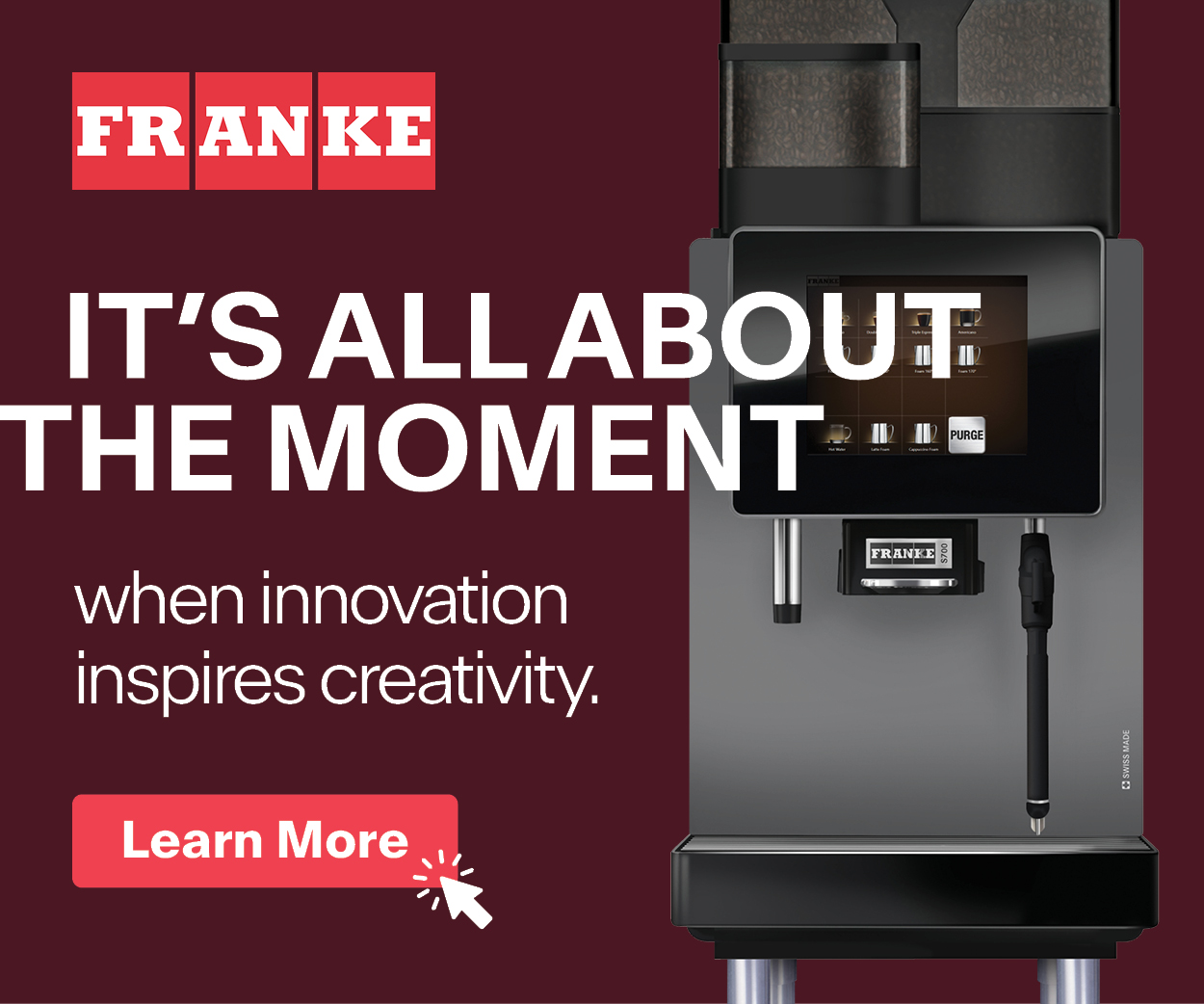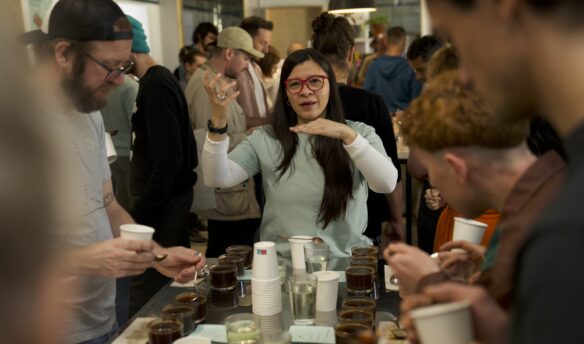This post is part of a special section on build–outs for the contemporary café. Read more posts from the section here.
[I]rving Farm Coffee Roasters helped blaze the specialty coffee trail in New York City after being among the first shops in the city to offer single-origin and specialty-blend coffees. Since opening its Gramercy Park location in 1996, Irving Farm has expanded to locations throughout Manhattan, now roasting out of a space in Millerton, New York, about 100 miles north of the city.
As corporate coffee chains pepper the country with cookie-cutter designs, Irving Farm sought ingenuity in its latest café build-out, opting to work with renowned architect Selim Vural, of Studio Vural—a New York–based design and architecture firm. The new café is housed in a classic, pre-war building in the Midtown East neighborhood.
Irving Farm was very intentional about the location. “There is an unfortunate dearth of outlets for quality comfort food and drink, especially in a warm, community-oriented environment around that area,” says Maura Hehir, a member of the Irving Farm communication team. “We thought that in this stretch of Manhattan with so many hotels and office buildings, we might have the opportunity to, in effect, ‘welcome the neighborhood home.’ We hope to foster more of a sense of community in this area for residents and to spread the feeling of a home away from home for visitors and commuters.”

Irving Farm buildings director Brandon Epting echoes Hehir’s sentiments. “We’re a very sensitive group of people and aim to create spaces that are welcoming. We want to be part of a neighborhood—contributors—not just a retail space,” Epting says.
The café’s black concrete floor features brass inlays, mirroring a portion of the sidewalk down the block and the timeless form of nearby landmarks, like the Chrysler building and the Waldorf Astoria. Epting explains that the blackened steel door and framed menu board, complete with burnished brass details, also reflect themes of New York’s constant growth and construction.
“We’ve maintained many of our staple textures and materials,” Epting says. The company’s roots in farming and nature are honored with tables and bar space crafted from white oak. Black fireslate countertops provide contrast to the lighter material, directing customers to the register.
“The simplicity of these textures and colors blends the history and style of the neighborhood with our personality as a coffee roaster, and allows us to have a few modern elements that stand out,” Epting says.
Eight-foot Castor fluorescent tube lights illuminate the bar, framed by white oak ceiling boxes designed by Vural–which, conveniently, also conceal the HVAC system. A sleek, Brendan Ravenhill church chandelier hangs above the walnut communal table. Moroccan clay tiles line the café wall; Vural chose these to upgrade the traditional subway tiles commonly found in New York cafés. The tiles mimic the style of raw brick walls and add elegance, another callout to the neighborhood’s luxurious hotels.
The coffee bar and seating area are the most visible elements of the build-out, but Epting says improving kitchen efficiency was also key for this project—preparing great coffee and a great meal quickly without getting delayed by customers in line is a challenge for many cafés.
“Our kitchens have always followed the line of our customer queue, with window passes open to the public,” Epting explains. “This often creates bottlenecks, as customers like to watch their food be prepared and often chime in about ‘less pickles, more ham.’” Epting says an open-style prep area is also problematic for kitchen storage, as prep areas have to be compact, limiting the amount of space for back-up ingredients and dish cleaning.
“For this location, we’ve placed the kitchen behind the bar as its own room,” he says. “This provides ample space for ingredient storage, a full dish-cleaning area, ice machine, ventilation hood, etc.” A separate kitchen space also limits customer access, which means fewer interruptions, less food waste, lower cost of goods, and better efficiency producing quality meals.
The new café is warm and welcoming, while still bringing cutting-edge design to the neighborhood. Vural emphasizes that forward-thinking design doesn’t have to exclude comfort or connection. He hopes for the new Irving Farm location to be an example—setting a standard for quality design that offers new assets to the community, while blending harmoniously with the existing neighborhood.
The Midtown East location of Irving Farm opened earlier this year.
—Ellie Bradley is Fresh Cup‘s editor.
Contemporary Café Build-Outs
Resourceful Café Build-Outs | Irving Farm Coffee Roasters | Spotlight-Stealing Espresso Machines | Go Green | Henry’s House of Coffee


















